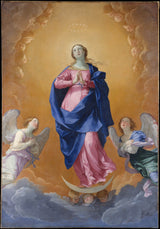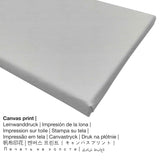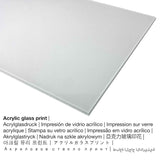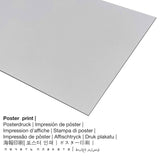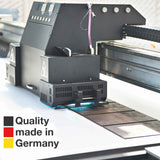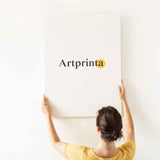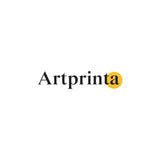Guido Reni, 1627 - Echiche mara mma - mbipụta nka mara mma
Ụtụ gụnyere. Mbupu gbakọrọ na ndenye ọpụpụ.
Nkọwapụta nka nka izizi sitere na webụsaịtị Metropolitan Museum of Art (© - site na The Metropolitan Museum of Art - Museumlọ ihe ngosi nka nke Obodo)
Reni, the most celebrated painter of seventeenth-century Italy, was particularly famous for the elegance of his compositions and the beauty and grace of his female heads, earning him the epithet “Divine.” This otherworldly altarpiece was commissioned in about 1627 by the Spanish ambassador in Rome for the Infanta of Spain. It was later in the cathedral of Seville, where it exercised a deep influence on Spanish painters, especially Murillo. It later belonged to the Earls of Ellesmere at Bridgewater House, London.
Ozi ndabere na nka sitere na aha ya Guido Reni
In 1627 Guido Reni painted this 17th narị afọ masterpiece with the title "The Immaculate Conception". The 390 year-old masterpiece was painted with the size of 105 1/2 x 73 inch (268 x 185,4 cm) wee mepụta ya na Usoro oil on canvas. This artwork forms part of the digital collection of Museumlọ ihe ngosi nka nke Obodo, which is one of the world's largest and finest art museums, which includes more than two million works of art spanning five thousand years of world culture, from prehistory to the present and from every part of the globe.. With courtesy of - The Metropolitan Museum of Art, New York, Victor Wilbour Memorial Fund, 1959 (ọha na eze). Furthermore, the work of art has the creditline: Victor Wilbour Memorial Fund, 1959. Furthermore, alignment of the digital reproduction is portrait with a ratio of 1: 1.4, nke pụtara na ogologo bụ 29% mkpụmkpụ karịa obosara. Guido Reni was a painter from Italy, whose style can primarily be assigned to Baroque. The Italian artist lived for a total of 67 afọ, amuru na 1575 in Bologna, Bologna province, Emilia-Romagna, Italy and deceased in 1642.
Ngwa ngwaahịa a na-ahọpụta
Anyị na-enye ụdị nha na ihe dị iche iche maka ngwaahịa ọ bụla. Ị nwere ike ịhọrọ n'ime nhọrọ nhazi ngwaahịa ndị a:
- Ugogbe acrylic ebipụtara: An print on acrylic glass, which is often referred to as a an art print on plexiglass, changes your favorite original into marvellous wall decoration and makes a viable alternative option to canvas or dibond fine art prints. The artwork is being printed with the help of modern UV print technology. This has the effect of vibrant and impressive colors. With an acrylic glass fine art print contrasts and minor painting details become visible with the help of the fine gradation.
- Mbipụta akwụkwọ mmado (akwa akwa akwa): The poster print is a printed flat canvas paper with a slightly rough surface finish. A poster is excellently designed for placing the art print with a custom-made frame. Please keep in mind, that depending on the size of the canvas poster print we add a white margin of something between 2-6cm around the artwork, which facilitates the framing with your custom frame.
- Mbipụta kanvas: A canvas direct print is a printed cotton canvas stretched on a wood stretcher. Canvas Prints have the advantage of being relatively low in weight, meaning that it is easy to hang your Canvas print without the use of any wall-mounts. Therefore, a canvas print is suitable for any kind of wall.
- Metal (aluminium debond mbipụta): An Aluminium Dibond print is a material with an outstanding depth effect. Its non-reflective surface structure creates a contemporary look. For the Print On Aluminum Dibond, we print the chosen artwork onto the aluminium white-primed surface. The colors are luminous in the highest definition, the fine details appear crisp. The direct print on aluminium is one of the most popular entry-level products and is an extremely modern way to display artworks, because it draws focus on the replica of the artwork.
Tebụl nchịkọta ihe nkiri
| Aha onye nka: | Guido Reni |
| Aliases: | Guido Rheny, Gueedo, Guidorenie, Guido Rini, guidoredi, Guido Renni, Giulio Rena, Le Guidoreni, Guedo, Guiderone, Guide Doreni, Guido Bolognese, G. Reni, Reni Quido, Guido Bolognes, Guido Reno Bolognese, Gidoreni, Le Guido réuni, Guidoni, Guidoraine, Guidoreni, Guido Rena, Leguido, Guido René, Guide de Renen, Guido de Reyna, buido, Guidoreny, Guido Redi, Guido Reni de Bologna, Gudureno Boloneus, Guido Rhene, Guido-Reni dit le Guide, Sig.r Guidi, Guido Rheni, Guido Reno, Du Guide, Guido Renie, Guidorene, Guidop Reni, Guido, Guido Bologna, le Quide, Giudo Reni, Giulio Reno, Guido-Reni, Quindo Rhemmy, Guido Reni dit le Guide, Guido Reyna, Guido R., [Guido Reni], Goidorino, Guidoreno, Guide, School of Guido, Guido Bollonees, Guidesco, Guid Reni, Guido School, Guido Reni van Bolonge, Le Guido Rheni, Guidozeni, Guido Boloneze, Guido Rheni dit Le Guide, Guido Remo, Guide Reni, Guido Reni ou le Guide, Huido reyno, Guido Rueni, Guiddo Reni, Guydo, Signor Guido, Guido Reni, Le Guide, Il Guido, Leguide, Guido Reni Bolognese, Guidop, Gudio, Grido Reni, Quido Reni, Reni Il Guido, Guidi, Guido Rheno, Reni Le Guide, Guido Bolonese, Huido reno, Buide, guido reni bologna, Guido Bolanez, Guido Bolonois, scola di Reno, Quido, Réni dit le Guide, Giud, Le Guide célèbre maître Italien, Guido Reny, Guido Vani, Reni Guido, Guido Bollonnes, Reni, Guidoren, Guid, Haido reno, Le Guyde, Guido orena, reni g., Guido da Bologna, Gnido, Grido, Guido Ren, Vidoreno, Reni Guido, Guido de Reny, Guydo Reni, Guide Le |
| okike nke onye nka: | nwoke |
| Obodo onye nka: | Italian |
| Ọrụ: | onye na-ese ihe |
| Obodo onye nka: | Italy |
| Nhazi nke onye nka: | nna ukwu ochie |
| Ụdị nka: | Baroque |
| Akwụsị: | 67 afọ |
| A mụrụ: | 1575 |
| Ebe omuma: | Bologna, Bologna n'ógbè, Emilia-Romagna, Italy |
| Nwuru: | 1642 |
| Obodo ọnwụ: | Bologna, Bologna n'ógbè, Emilia-Romagna, Italy |
Iberibe tebụl nka
| Aha nka: | "Echiche nke na-adịghị mma" |
| Nhazi nke ọrụ nka: | sere |
| Otu izugbe: | nka ochie |
| Narị afọ nka: | 17th narị afọ |
| Emepụtara n'afọ: | 1627 |
| Ogologo afọ nka nka: | 390 afọ |
| Ihe osise izizi: | mmanụ na kwaaji |
| Akụkụ izizi nka: | 105 1/2 x 73 inch (268 x 185,4 cm) |
| Egosiputara na: | Museumlọ ihe ngosi nka nke Obodo |
| Ebe ngosi nka: | New York City, New York, Njikota Obodo Amerika |
| Dị n'okpuru: | www.metmuseum.org |
| Licensedị ikike: | ngalaba ọha |
| Site n'aka: | The Metropolitan Museum of Art, New York, Victor Wilbour Memorial Fund, 1959 |
| Ebe E Si Nweta: | Victor Wilbour Memorial Fund, 1959 |
Banyere ihe
| Nkewa ngwaahịa: | nka nka |
| Mmeputakwa: | dijitalụ mmeputakwa |
| Usoro mmepụta: | UV kpọmkwem obibi |
| Production: | arụpụtara na Germany |
| Ụdị ngwaahịa: | mmepụta ihe na-achọ |
| A na-atụ aro iji ngwaahịa eme ihe: | mgbidi mgbidi, mgbidi ndozi |
| Nhazi nke ihe nka: | nhazi ihe osise |
| Oke akụkụ onyonyo: | 1:1.4- (ogologo: obosara) |
| Mmetụta nke akụkụ akụkụ: | ogologo bụ 29% mkpụmkpụ karịa obosara |
| Akwa ngwaahịa dị: | acrylic glass print (nwere ezigbo mkpuchi iko), mbipụta akwụkwọ mmado (akwụkwọ kwaaji), mbipụta ọla (aluminium dibond), mbipụta akwụkwọ. |
| Mpempe akwa akwa (akwa akwa na etiti ihe ndọtị) nha: | 50x70cm - 20x28", 100x140cm - 39x55" |
| Acrylic glass print (nwere ezigbo mkpuchi iko) nhọrọ: | 50x70cm - 20x28", 100x140cm - 39x55" |
| Nhọrọ nha nke akwụkwọ mmado (akwụkwọ kwaaji): | 50x70cm - 20x28" |
| Nhọrọ aluminom dibond (ihe aluminom) nhọrọ: | 50x70cm - 20x28", 100x140cm - 39x55" |
| ụba: | adịghị |
Ederede iwu dị mkpa: We try all that we can to describe our art products as accurately as possible and to display them visually on the various product detail pages. Still, the pigments of the print products and the printing can vary slightly from the presentation on the screen. Depending on the settings of your screen and the condition of the surface, colors can unfortunately not be printed as realisitcally as the digital version shown here. Since all fine art prints are processed and printed manually, there may also be slight differences in the motif's exact position and the size.
Ederede a bụ ikike ọgụgụ isi ma chekwaa ya site na nwebisiinka © | Artprinta (www.artprinta.com)

